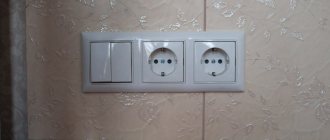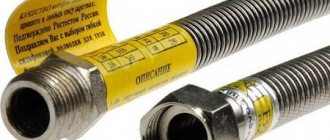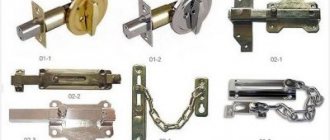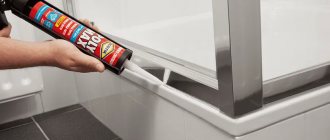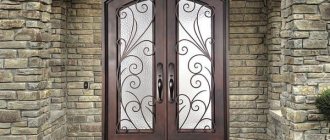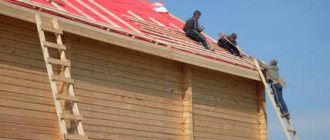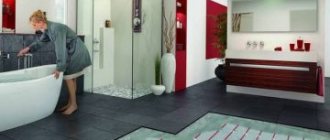In modern interiors, the rule of minimalism is usually applied. The fewer objects are visible in a room, the more spacious and comfortable it seems. This also applies to the choice of location of electrical outlets. When planning a renovation, it is advisable to determine in advance at what height the sockets for the TV will be, since such household appliances are almost always in the house and often in more than one copy. The correctly selected location of the outlet unit does not spoil the interior and facilitates the operation of the TV and connected additional devices.
Features of installing switches and sockets in the kitchen
When it comes to installing a socket and switch in the kitchen, then in this situation the issue needs to be given special attention.
In the kitchen, as a rule, there is a very large number of different household appliances. In addition, it is in this room that there are a huge number of zones that can be dangerous: these are open fires, stoves that heat up, a large amount of water
It is necessary to pay special attention to safety in this situation.
In addition, it is in this room that there are a huge number of zones that can be dangerous: these are open fires, stoves that heat up, and a large amount of water. Particular attention must be paid to safety in this situation.
You should not use extension cords or adapters in the kitchen, unnecessary wires, which very often cause short circuits and very strong fires that are difficult to extinguish.
How to properly place sockets and switches in the kitchen: video designer tips
In the kitchen, the height of sockets and switches should take into account what features the room has, what electrical and other appliances are there, and also depending on many other nuances.
There are several general rules that everyone should be familiar with:
- The surface where you cook, as well as the sink, are the most dangerous areas; you should not install them near them, because this can result in serious problems.
- The installation of an outlet that ensures the normal and full operation of household appliances in the kitchen must be done next to this appliance or above its surface.
- Very often, people can make the same mistake - they place sockets behind appliances, where it is very difficult, and sometimes even impossible, to reach.
- When you choose a place for an outlet, you must take into account the height of the countertop. This is necessary so that you can provide maximum access to the outlet, during which there will be no inconvenience.
Inconvenient location of sockets and switches video
What height is the location of switches and sockets in an apartment? This is a very important issue that needs to be studied in detail. If you violate some rules and standards, this may result not only in discomfort in the future, but also a serious problem. Incorrect placement of the outlet can lead to a short circuit and then a fire. In addition, this can cause a lot of inconvenience, so you need to follow the rules and treat this issue very carefully. If you cannot independently design the location of devices in a particular room, then use the services of specialists who will help solve this rather important and delicate issue.
Children's
Sleeping area
The children's room is the same bedroom, only for younger family members. While they are very small, they do not need many electrical appliances: a night light by the crib is quite enough.
Game Zone
But later, your offspring will need additional places for charging: for gaming gadgets, a personal computer and computer peripherals, and a game console. The two required by building codes are clearly not enough, especially if there is more than one child.
Connectors in children's rooms are often made “safe,” that is, with special covers and plugs that the baby cannot pull out on his own. If the child is small, it makes sense to install just these. And no dangling wires for a child to pull on!
Workplace
It is also necessary to consider the number of sockets in the space that you plan to allocate under your desk. All computer equipment and table lighting require one point for each piece of equipment. And, as always, one more in reserve.
Connection diagram options
There are two main connection schemes - parallel (“star”) and serial (“loop” or loop-through). All the rest, no matter how complex and intricate they are, are combinations of these two main options. They resemble standard electrical circuits, but are lower voltage.
#1: “Star” – several independent lines
Once upon a time we got by with one video receiver for the entire apartment, now there are televisions installed in almost every room. To connect all devices to a single cable leading from the panel or over-the-air antenna, a special signal distribution device is required - a splitter or splitter.
This is a kind of switching organizer that has one input for an antenna cable and several outputs for connecting TVs.
The origin of the “talking” associative name of the parallel connection option becomes clear: the splitter is, and all the cables extending from it are its “beams”
The advantages of parallel connection are not only good signal quality, which is usually weakened by pass-through sockets. During installation, the splitter is mounted in the most convenient place (for example, in the corridor), and it is easier to extend branches from it to other rooms. If one of the sprout cables becomes unusable, the functionality of the rest of the network will not be affected.
There is an improved star amplifier solution that ensures video signal attenuation is minimized. The standard power supply is designed for 2-3 receivers, but usually there are more, so the amplifier compensates for the lack and ultimately improves the video signal.
A standard amplifier (such as SAT Legrand) may be required in two cases: 1 – if there are a large number of working televisions in the apartment, 2 – if the signal from the over-the-air antenna or cable provider is very weak
For parallel connections, either terminal or simple sockets are required. It is better to prefer the end ones to avoid interference if one of the TVs is not actively used. They differ from simple ones by the presence of wave impedance (75 Ohms), which can balance the signal.
#2: “Loop” – pass-through sequential circuit
The pass-through scheme is considered cheaper, but of lower quality. It was actively used in previous years, but modern digital technologies have supplanted it, since they can only work via a parallel connection.
It turns out that you can use a “daisy chain” connection only in one case - if you have exclusively analog television and changes are not expected in the near future.
The sequential scheme requires the mandatory use of pass-through sockets located one after the other, but the last in the chain must be the terminal
Pass-through modules are equipped with filters that dampen the reflected TV signal. The absence of a filter can be easily determined by the characteristic ripples on the TV screen
When choosing products, pay attention to characteristics such as pass attenuation (from 1.5 to 5 dB) and branch attenuation (from 10 to 15 dB), give preference to devices with the lowest parameters
Please note that as the number of connections increases, the signal quality weakens, even if the network is provided with an amplifier or an auto-regulation system, so for 4-5 or more receivers it is better to use a parallel circuit.
And carefully read the agreement with the provider: in some cases they limit the number of active points, and impose a fine for installing additional ones.
Sequence of DIY work
Let's look at how to install a TV outlet yourself.
When is gating necessary?
Grooves are used on monolithic and brick walls with large surfaces. This is true for external load-bearing coverings and partitions without the presence of power cords in them. The thickness of the drilling is large, such walls cannot be damaged. To groove internal planes, you will need permission from the construction department.
Installation options without grooves
This open installation involves installing sockets on an external wall without drilling channels and holes for socket boxes. The wires will run outside along the plane.
Also, the optimal solution is to install surface-mounted electrical installations. This option is great when the renovation has already been done and you don’t want to spoil the finish. The connector can even be installed on top of tiles.
Selecting wire cross-section
The indicator is measured in square millimeters and shows throughput. To ensure safe operation of the receiver, purchase a cable with a reserve cross-section, then the insulation will not be damaged by the load.
The wire cross-section is not equal to the diameter. The latter is measured with a ruler, put into a formula and the cross-sectional area is calculated.
The wiring cable is always rounded up. For example: when calculating it turned out to be 2.2 square meters. mm. This means that you need to take a 2.5 square cable.
Fastening and fixing
There are 2 options for connecting the connector. The star pattern means that the old wiring is removed and the new wiring is placed through the splitter. It is designed to branch a signal, divide it into packets and amplify it.
Electrical sources are placed at the entrance of the wire into the living space from the entrance. Then the antenna conductors are wired. Used frequently. Advantages:
- the wires are located in a technically safe place, which is important during installation and routine inspection;
- the signal is stable;
- The separated packages continuously supply current to the TV sockets.
The second installation method is daisy chain. The main cable extends to any TV, and then branches into 2 or more parts to other devices directly at the connector. With this connection scheme, there is a saving on cables. The disadvantage is that the quality on the first TV will be higher than on subsequent ones.
How much wire is needed
Now there are different methods of data transmission that require their own connection to the network. Instead of 1 socket, install a block that contains at least 4 connectors.
Installing socket boxes in a concrete wall
Placement of sockets in a residential apartment
Socket boxes should be made exclusively for hidden installation of house wiring. The location of the electrical outlets is marked on the wall; to do this, you can outline the box with a pencil.
A special concrete crown is used to cut the hole where it was marked. When the contour is drilled using a hammer and chisel, the inside of the recess is knocked out. The wall in the recess is leveled so that the socket box stands exactly against the wall. If you don’t have a crown, you can gouge out the hole with a pike with the blow turned on, or manually with a hammer and chisel.
Most houses use round socket boxes for internal installation, although sometimes they are also of square shape. In this case, drilling with a crown will not work. You can make cuts with a grinder or hollow out them with a hammer drill. The depth of the hole should be such that the socket box extends 1 cm beyond the edges of the wall. When the hole is ready, it’s time to install the groove.
The installation of the socket box differs depending on their type. There are both single and joined on the sides. To do this, you need to know how to make a groove; it must fit so that the cable can fit inside the recess without any problems.
To attach the socket box to the wall, plaster, alabaster or pearlfix is required. Perlfix would be better as it dries faster. Sometimes we use gypsum glue. The mixture should be thick, so it will set faster. During fastening, using a spatula, everything is wrapped with solution from the inside, after which you need to put a socket box there. After this, the gap between it and the wall is covered, while holding the socket box with your hand. When the mixture has completely dried, you can remove the excess and continue installation.
If sockets are installed without grounding, there will be only 2 holes on them, if with grounding - 3. According to the rules, contact connections should be located at the bottom. The excess length of the wire is laid on the bottom, after which the wires are connected to the outlet.
Which cable to choose for the kitchen
Next, you need to calculate the cross-section of the common supply wire of the electrical panel and the outgoing wiring to each pantograph. Follow the rules here:
- for device loads up to 3.5 kW - copper cable VVGng-Ls 3*2.5mm2
- for device loads up to 5.5 kW - copper cable VVGng-Ls 3*4mm2
- with a total load of all devices up to 10 kW - copper cable VVGng-Ls 3*6mm2
- with a total load of all devices up to 15 kW - copper cable VVGng-Ls 3*10mm2
Why there should be a brand VVGnG-Ls is discussed in detail in the article below:
Even if you have a house with an old grounding system (without a third protective conductor), still do the wiring with a 3-core cable. This will save you in the future from additional costs for reconstruction and replacement of wires.
As a last resort, the third wire will be a backup for zero or phase, in case of a possible break or other damage.
Coswall CS-OFSO-3DE-SW – triple socket
Another universal model that works with a rated mains voltage of 100-240 V. The product has a rectangular shape and is equipped with 3 sockets. The socket is ideal for installation in an office or next to a desktop computer.
The design has rather large dimensions - 222x118x65 mm. And the thickness of the front model is only 2.5 mm, so the structure will not stick out from the wall. In reviews, users praise the good opening mechanism. If in most similar sockets the socket “flies out” instantly after pressing the button, then in the case of CS-OFSO-3DE-SW it slides out smoothly, which means it will last longer without breaking.
Pros:
- 3 connectors;
- silver cover;
- smooth opening;
- metal case;
Minuses:
- no USB port provided;
- weight.
VIEW ON ALIEXPRESS
Installation
To connect a television outlet (simple), you need to run a television cable into the wall in advance, disguise it with plaster or lay it in a cable channel. The second option will require overhead TV sockets.
Basic installation rules:
- Before starting installation work, you need to make a corresponding hole with a drill and install a plastic box, called a socket box, into the wall.
- Extend the cable to a length of 15 cm.
- The television socket is disassembled into its component parts.
- Connect the TV cable in the direction of the arrow and secure it with a clamp.
- After this, you need to securely fasten the screw.
- Using a tester, you need to exclude the possibility of a short circuit due to incorrect connections.
- The parts of the television socket are installed in place.
After assembly, unprotected connectors must be closed, the wires hidden behind the housing. The insulation of the wires must not be damaged.
The installation of a pass-through television socket differs from the previous version. If a person has not limited himself to installing only one outlet for the TV and wants to use a star circuit, he needs to know how to install it correctly:
- First, install the splitter, and only then install the sockets.
- For each output on the splitter, one television cable is attached to a socket, which ends with the installation of a simple or terminal socket for the TV cable.
- When installing simple modules, you need to take into account that they do not have filters.
It is necessary to pay attention to cleanliness. The possible value falls within the range from 40 to 1000 MHz, but some devices narrow these boundaries
If you do not want to install digital television, or when using a sequential circuit, you need to take care of the quantitative limitation. The more “points” are installed in the house, the worse the signal will pass through them.
Installing a television outlet is a responsible undertaking. In order to install them throughout the house with your own hands, you should have at least basic knowledge of electrics, or understand this issue professionally.
If you have designed a complex circuit, then it is better to contact your provider for all installation questions, since a specialist can advise on the nuances of connection.
Socket as USB charging station
There is also a smart solution for many power-hungry mobile devices such as cell phones, MP3 players or tablets: instead of the classic socket, the USB charging station can be installed as a flush-mounted unit.
The built-in power supply allows you to charge multiple mobile devices in one place.
Design and installation locations of socket blocks
The design of the socket block differs from a conventional socket only in the number of “seats”. It consists of a plastic body and an internal part, represented by terminals with contacts and terminals, to which springs for the plugs are attached.
Most modern models are equipped with grounding contacts, which are designed to increase the safety of the system and reduce voltage from all electrical appliances connected through the unit.
The number of connection points of the installed socket block is determined based on the availability of household appliances placed in one group
There are two types of socket blocks:
- Designed for hidden wiring. Installed into the thickness of the wall using a module made of glass-shaped socket boxes;
- Designed for open wiring. They are installed on the wall surface using a plate-shaped socket box.
In addition to the two main types of socket blocks, there is also a very practical retractable type. They are easily mounted in a countertop or cabinet, from which they can be pulled out when needed. Their operating principle is similar to power supplies located on/in the wall.
Socket blocks are often installed in kitchens, placing them behind the work table at a height of 10 cm, inside kitchen cabinets and behind the walls of adjacent cabinets at a level of 30-60 cm from the finished floor. Built-in sockets are convenient to use when connecting a group of low-power household appliances: hoods, multicookers, refrigerators...
The recessed housing of the retractable socket group, consisting of three to five electrical outlets, remains hidden in the tabletop until you lightly press on its top panel
When arranging halls and living rooms, they are placed near computer desks or behind the TV screen. Socket groups of three electrical points can often be found in bathrooms. But in this case, devices with waterproof housings are used, placing them at a distance of at least 60 cm from the water source.
Availability of grounding
Household appliances that consume large amounts of power must be grounded, which will provide reliable protection against electric shock. This mainly applies to washing machines, electric stoves, boilers, etc.
In the usual version, the socket has only two contacts - phase and zero. The grounded socket has one more contact - it performs this function.
On sockets that are installed in children's rooms, there are so-called curtains as additional protection; they prevent foreign objects (nails or pins) from getting into the socket contacts.
Optimal placement height
It is not always possible to calculate everything in advance when working with electrical wiring for a TV, especially since it can break and you will have to purchase another one, different in design from the previous one. Especially for such situations, a universal approach to choosing the height of the socket was developed.
According to this method, the optimal height of the outlet for your TV is about 130-140 centimeters from the floor. This data is usually used in rooms where TV viewing is done while sitting.
Where these numbers come from and how to independently calculate at what height to make a TV socket will be discussed below, and the formula used in the calculations will also be provided.
How to calculate the height of a TV outlet using the formula
The main criterion for the correct location of the TV outlet is the actual placement of the TV itself. At the same time, we must not forget that the TV should be located at a direct degree from the eyes of the viewer. If we take your view as a line, then the plane of the TV screen should be at an angle of 90 degrees to this imaginary line.
The location of the TV in the living room is recommended at a level of 120 centimeters from the floor. It is at this level that the eyes of a person sitting on a sofa or armchair are located.
In the image below you can see how to install the socket correctly: along the vertical axis, closer to the top edge of the case. The result was obtained using simple mathematical calculations.
The most popular diagonal of a modern TV is considered to be a 32-inch diagonal; the diagonal height of such a TV is about 40 centimeters. This is the smallest display, you don’t buy smaller ones, only bigger ones. For our calculations, we take the height of the TV, we take the height of the installed socket, which together with the plastic frame is 8 centimeters. Next we use the formula.
If the TV is located at a height of 120 centimeters from the floor, then the following solution is obtained: 120+40/2-8=132. All sizes are rounded for clarity.
If we use exact numbers in the formula, then as a result the socket will be 4 centimeters below the top edge of the display of the TV taken as an example, so it will not be noticeable even if you watch TV while standing.
Even without resorting to mathematics, you can install the socket at a height of 140 centimeters, in which case it will still be hidden by the TV body, and thanks to the adjustable brackets you can always slightly change the position and height of the TV.
The conclusion is as follows: if we know the parameters of the TV, we calculate everything using the formula; if we don’t know, we mount the outlet at a height of 140 centimeters from the floor.
In the image above you can see an excellent option for the location of the outlet: it is recessed into the wall. If your wall and the availability of the necessary tools allow this, this will be the best location. The height of the TV sockets will not cause you any difficulties.
| Friends, I would like to point out that when choosing the installation height of sockets for a TV, there are no clear norms or rules. In this matter, in each specific case an individual approach is needed, it all depends on the diagonal of the TV, the size of the furniture, the height of the ceilings, etc. This article provides only recommendations based on which you can make the right choice. |
Similar materials on the site:
- Where to place the light switch
- Should I leave the charger in the outlet?
- How to power the hood from an outlet
Adviсe
When using tools, handles must be insulated. Sockets are installed only in a de-energized room. It is important not to contact your body with exposed wires. Before connection, each wiring is checked with a phase indicator.
To install an outlet under the TV yourself, you need to have knowledge and follow safety precautions when working. The placement of the TV on the wall is very convenient and modern. Depending on the place where it will be viewed, the height of the sockets is set at an optimal distance of 120-140 cm from the floor.
Distances and locations
Here you will need the exact dimensions of the kitchen - length, height of the room. Gradually, in the form of rectangles, you draw the equipment and all the cabinets.
If the kitchen is corner, do the same with the adjacent wall.
Next, take your plan with the number of sockets and transfer them to the wall layouts. For each technique, follow its own rules.
Refrigerator socket
For built-in refrigerator
It is better to place the socket in the kitchen plinth - this way it will be accessible, and if necessary, the device can be turned off. The socket should not be placed behind the appliance - it may interfere with the installation of the frame and the refrigerator itself. If the kitchen configuration allows, you can place the outlet in an adjacent cabinet. In this case, the height of the outlet varies from 20 to 70 cm from the level of the finished floor and no further than 10–20 cm from the refrigerator itself.
For free-standing refrigerator
It is allowed to place an outlet directly behind it. But the best option is 5–10 cm from the refrigerator: the socket will be in constant access, and if necessary, you will not have to move the refrigerator.
Sockets in the work area and above the tabletop
The height of the tabletop is usually 85cm, maximum 90cm. Then there is a partition with a height of 550-600mm and then cabinets.
Place sockets in this area 105cm from the floor.
In this case, they will not end up in the middle of the wall, and it will be convenient to cover them with the same microwave.
The minimum distance from the countertop should be at least 5cm so that the kitchen plinth does not touch them. Location: one set in any corner, plus between the hob and sink.
As mentioned above, at least two pieces. If you don't like the look of sockets above the kitchen splashback, consider the option of a pull-out unit from the countertop.
You definitely need to consider whether there will be built-in appliances in the upper cabinets. For example, a microwave.
You will also have to make a separate outlet for it. It is not feng shui to pull the cords from above to the tabletop area.
Hood
Also at the top, at a height of 1.9m-2.0m, there is an outlet for the hood. However, a lot can depend on the brand. If this is a cheap option, then you can get by with the cable outlet and then connect it directly inside the equipment.
But if this is an expensive model, then it comes with its own fork. And cutting off the factory plug will void the warranty.
Sockets for hob and oven
If this is not a single appliance, the electric stove, hob and oven are connected to different sockets. When the oven is located in the classic way under the hob, the sockets are placed at a height of 10 cm from the level of the finished floor in the kitchen basement in the center of the frame or in an adjacent cabinet.
If the oven is built into a column, the socket is installed there, in the center of the frame at a height of 55-70 cm from the level of the finished floor, depending on the lower drawers. It can also be placed in the kitchen basement.
But the location directly behind the oven is unacceptable. There is a high probability that the plug plugged into the socket will interfere with the installation of the device.
Dishwasher
It is also prohibited to place sockets behind the dishwasher and washing machine. Near the dining table (if it is located near the wall and not in the center of the kitchen), it is advisable to plan one outlet.
On big holidays, when there is an influx of guests and relatives in the apartment, you will definitely need to connect something on the table - a mixer, a juicer, a food processor, etc.
And on simple days, you can easily attach a laptop there when working in the kitchen.
Socket and switch for lighting
But for lighting you need not only a socket, but also a switch. The optimal location of the switch is in a group with household sockets on the apron.
The socket can also be located above the kitchen or inside one of the wall cabinets. The height of its location depends on the height of the kitchen combination and frames.
Advice:
If the color of the tiles on the backsplash in your kitchen is different in color from the furniture facades and walls, you should not put up with it and buy sockets of a standard color - white, beige or gray.
Legrand
company
Celiane
sockets and switches with interchangeable frames, the color of which you can combine yourself: for example, green for sockets above the tabletop, beige, matching the color of the furniture, for the backlight switch, and make the socket for the TV gray.
The Céliane collection has 44 decorative frame options. Plastic and metal, five types of glass, natural wood, leather and other materials. Frames and front panels can be combined in any way you like - in any option that suits your interior. All frames are combined with the front panels of the mechanisms in four colors: white, ivory, titanium, graphite.
Interesting design solutions
Standard connectors of this type are usually square or rectangular in shape. However, today this attribute is not only a necessity, but also an opportunity to decorate the interior. For this reason, manufacturers produce many different modifications:
- The body of the product has a different decorative shape.
- The design is complemented by unique overlays that hide the holes. They fit perfectly into any interior.
- Built-in sockets. They are mounted directly into a table or other surface. The peculiarity of such sockets is that they can be easily hidden. This is an ideal option for people who prefer maximum functionality and practicality.
Sockets in the bedroom are very important, they ensure optimal functioning of household appliances.
For information on how not to place sockets in the bedroom, see below.
Location of lighting points
Lighting control points in the house are divided into three main groups:
- This includes classic switches - these are devices of different types, often with one or two keys. But thanks to three-key switches, you can simultaneously use three different groups of lighting installations.
- This group includes switches, which, when activated, control several lighting sources from different places at once.
- This group includes devices in which lighting control mechanisms are already built into the lighting tools. These include a table lamp and a floor lamp/
In the apartment, almost all rooms are equipped with one- or two-key switches, which is considered justified and, most importantly, comfortable.
The category of general lighting often includes lamps placed under the ceiling, providing uniform diffused light
For example, for a bathroom, an additional light source can be a lamp above the mirror. But regulation for such a device is carried out using a built-in switch
The bedroom has its own unique switch system. It allows you to adjust the light source simultaneously from different places. Let's look at convenience using an example.
Each sleeping place must be equipped with a lamp in the form of a night light on a table, bedside table, wall sconce or floor lampEvery time you need to turn the light on or off, you have to get out of bed, since the switches are located quite far from the bed. The solution is obvious. Three switches are installed in the room at once. One is at the exit from the room, and the other two are on both sides of the bed. As a result, it has become very easy to regulate the lighting in the bedroom, and access to switches will be at hand.
Dressing table
For a piece of furniture such as a dressing table with a mirror, it is reasonable to install two sockets on the sides - they are necessary for a table lamp or floor lamp, as well as for connecting a curling iron or hair dryer.
If the mirror has built-in lighting, one socket is installed behind the mirror, and a backup one in a convenient place, preferably 15-20 centimeters above the table level.
Instructions for installing TV sockets
You should start by installing the cables. To do this you will need a number of devices:
- If the incoming signal is weak, it will be necessary to amplify the tele-pulse, which will strengthen the signal and improve the image;
- Also a TV wire separator, because the signal will be sent common, and only then will it be divided among all TV viewers;
- A TV signal combiner will bring together signals of different frequencies and transmit the impulse via a conductor to your TV;
- Next, antenna plugs are needed to secure the television cable by soldering, which will create a reliable connection.
The next stage is installation. First of all, you should decide on the type of fasteners, which are divided by type of socket installation:
- Overlapping
- Closed installation
- Checkpoint
Next you will need working tools for installation:
- the TV socket itself;
- perforator;
- screwdrivers of different types;
- fasteners;
- devices for removing insulation.
Device installation procedure:
- A hole is made in the wall according to the dimensions of the device.
- Direct installation and fixation of the device.
- Removing the wire insulation, we control the process, especially preventing damage to the core, otherwise the cable may bend and break.
- We secure everything with a screw.
- We fix it with the outer cover.
If all operations are carried out correctly and carefully, then the device is completely ready for use.
Mount selection
Your next step will be to select a mount or bracket that will hold the TV on the wall. In general, for each specific brand and model there is, or at least recommended by the manufacturer, a separate type of fastening. All of them are standardized, but the most popular is the category with the abbreviation VESA.
All fasteners come in several types:
Rigid fasteners are a cantilever system, the elements of which will always be in the same strictly fixed position. The inclined and rotary types imply a movable system, that is, a bracket. Let's look at each type of fastening in more detail.
Pros and cons
TV is a popular electrical appliance. Modern technology is equipped with many tools, functions and advanced capabilities. Flat TV equipment is mounted on the wall, since this arrangement saves space and looks modern
In order for the equipment to work, you need a connection to the network, so it is so important to know how to correctly and correctly arrange sockets for the TV
Proper installation of equipment has a number of advantages:
- Possibility to hide wires and cords coming from equipment. Removing them behind the screen improves the appearance of the living room or bedroom.
- Reducing the distance between the outlet and the TV receiver to a minimum. Modern technology has a thin screen, does not take up much space, unlike boxes, so it looks more sophisticated and sophisticated.
- Having found a suitable place for the connector, install the fasteners and place the cords so that the socket does not create obstacles.
- Inclusion of the necessary equipment in one block.
- Creating safety for children. They won't reach the connectors.
If the connector is mounted far from the TV mount, then it will need to be moved, and this is a considerable amount of work. You can use an extension cord, but it will unsightly pass through the room, spoiling the appearance of the room.
What is rarely thought about
Very often, when drawing up a plan, home owners forget about important things that are an integral part of the life of any person. It is always necessary to make a block for such simple things as a vacuum cleaner or other appliances. It is better to make such an outlet near the input switch. A separate place for cleaning electrical appliances is very convenient, since you do not need to disconnect other appliances from power each time you clean.
It is important to consider how to place outlets in the bedroom for air conditioners or humidifiers. The air conditioner must be placed so that the air flow does not go directly to the bed. An air humidifier can be installed at the entrance. Then it is better to make the outlet for the vacuum cleaner a steam room.
In the photo below you can see how to decorate the frames of the blocks to match the overall design of the room.
Features of parallel and pass-through circuits
If you are not limited to installing an outlet for one TV and want to use a “star” circuit, pay attention to the following nuances:
- First of all, we install the splitter, and only then the sockets.
- We connect one cable to each splitter output, which should end with the installation of one socket (simple or terminal).
- When installing simple modules, please note that they are not equipped with filters.
Watch the frequency. According to GOST (R 52023), the possible frequency must fall within the range from 40 to 1000 MHz, and some devices “narrow” these limits. For example, the operating range of DOCSIS v.2.0 is from 47 to 862 MHz, respectively, sockets support these restrictions.
If you are the owner of a large two-story cottage, then the wiring of cables for various purposes must be thought out before finishing work begins. The diagram shows an example of connecting various technical devices indicating the type of cables, numbers indicate television receivers
If you are not interested in digital television and have chosen a serial connection scheme, do not forget about the quantitative limitation.
The more sockets there are, the weaker the signal. Of the levels allowed by Russian GOST of 57-83 dB, already with 3-4 pieces installed, you exhaust the allotted limit (for each socket - about 15 dB).
The following article will introduce you to the specifics of installing and connecting a computer outlet, the contents of which we recommend that you familiarize yourself with.
Closet
Sockets for lighting the wardrobe are located in close proximity to it. If the doors are hinged, the product is installed in such a way that they do not block access to the outlet.
The most convenient option is a cabinet with automatic lighting.
